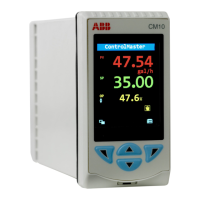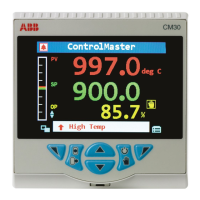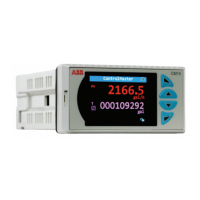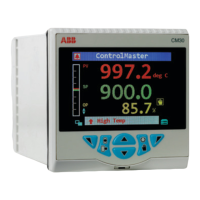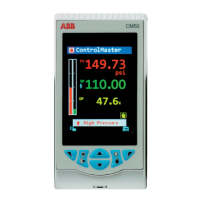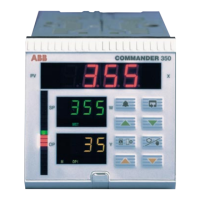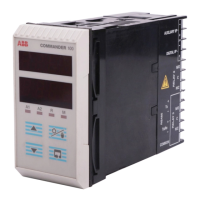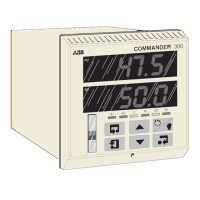Data Type Data Format
B Are three digit characters 000-255.
L Is a one digit character 0 or 1.
C & H
Are ten digit characters including digits,
decimal point and sign (when
negative). Zero = 0.0.
A Are ten characters or less.
F Are five characters or less.
Pressing
ENTER
after pressing
D
automatically recalls the last datapoint number that was accessed.
Pressing
N
after pressing
D
causes the next datapoint of the same data type to be displayed. (The
NEXT
command
N
only works with index numbers below 256.)
3.13.1.3 ALTERING A CONTROLLER DATAPOINT
To modify a value or enter a new value press
P
and the datapoint number followed by
ENTER
. Then
press the keys corresponding to the value to be assigned followed by
ENTER
.
For example, to change AI0 Units (A298) from PERCENT to gallons per minute (GPM):
P A298 <ENTER> GPM <ENTER>
Values entered with the
PUT
command
P
must be formatted as follows:
In general, all modification inputs are limited to the first ten characters of the field.
For B type datapoints, the value entered must be between 0 and 255.
For L type datapoints, the value must be 1 or 0.
All responses are completed by pressing
ENTER
.
Pressing
ENTER
after pressing
P
automatically recalls the last database parameter.
Pressing
N
after pressing
P
causes the next datapoint of the same type to be displayed. (The
NEXT
command
N
only works with index numbers below 256.)
3.13.1.4 SETTING OR CHANGING A CONTROLLER PASSWORD KEY
As a security feature, the controller can be configured with a password key that is required to access
the Engineer Mode configuration function. The password key can be set by the Hand Held Config-
urer, or any of the personal computer application packages (53HC3300 or 53MT6000). It can also be
set from a SUPERVISOR-PC, but not with the controller faceplate push buttons. A password key is
a special data type (
Q1
) that is displayed or configured just like any other data type using the Hand
Held Configurer. The value assigned to a password key must be an ASCII numeric string up to 10
characters because only numbers (0-9) are permitted as
KEY?
input characters by the controller. To
remove a password key completely, press
CTRL
0
(hold
CTRL
and press
zero
, then ENTER.
53MC5000 Process Control Station
3-24
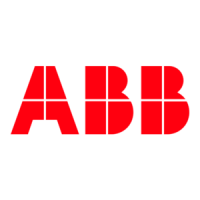
